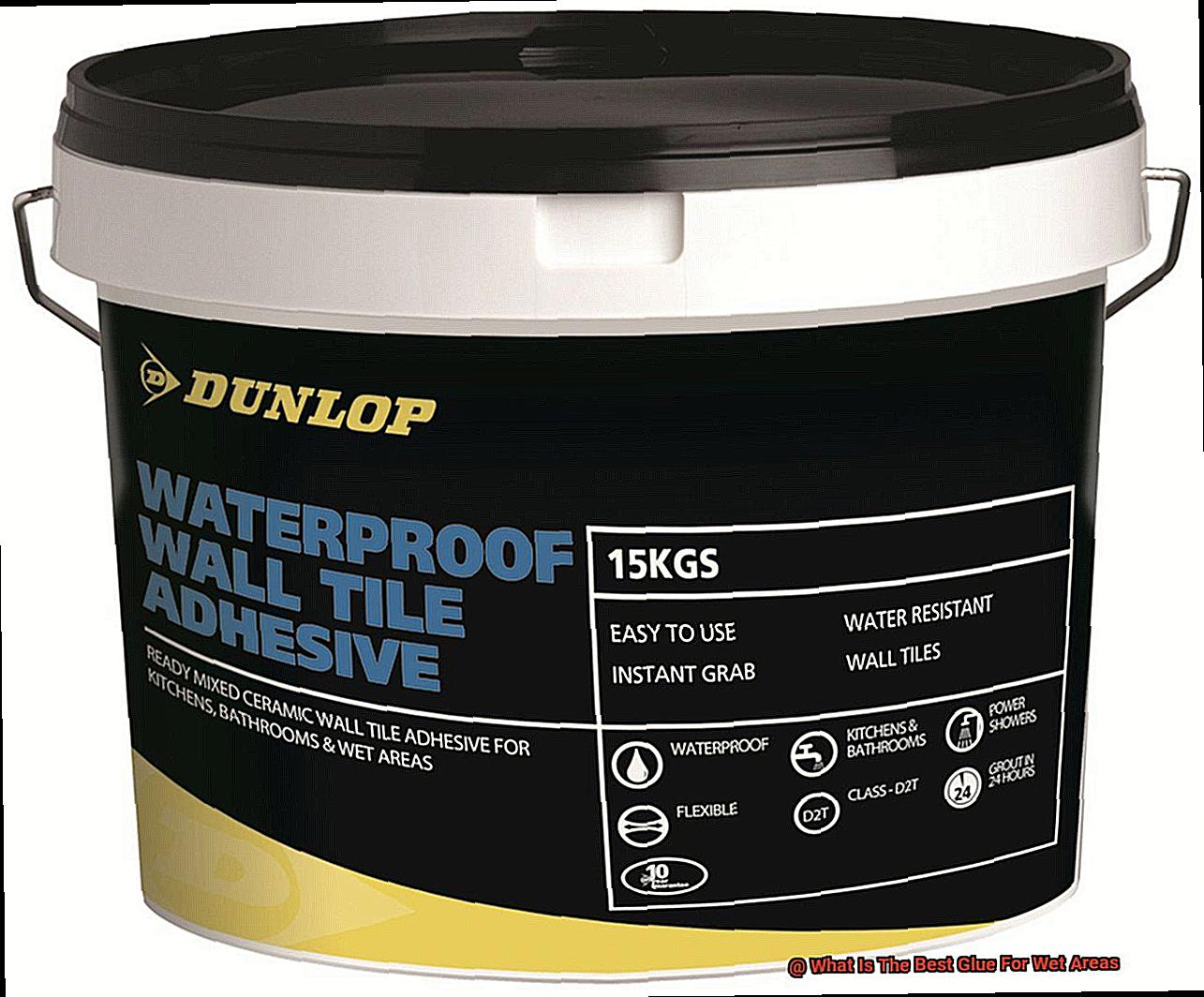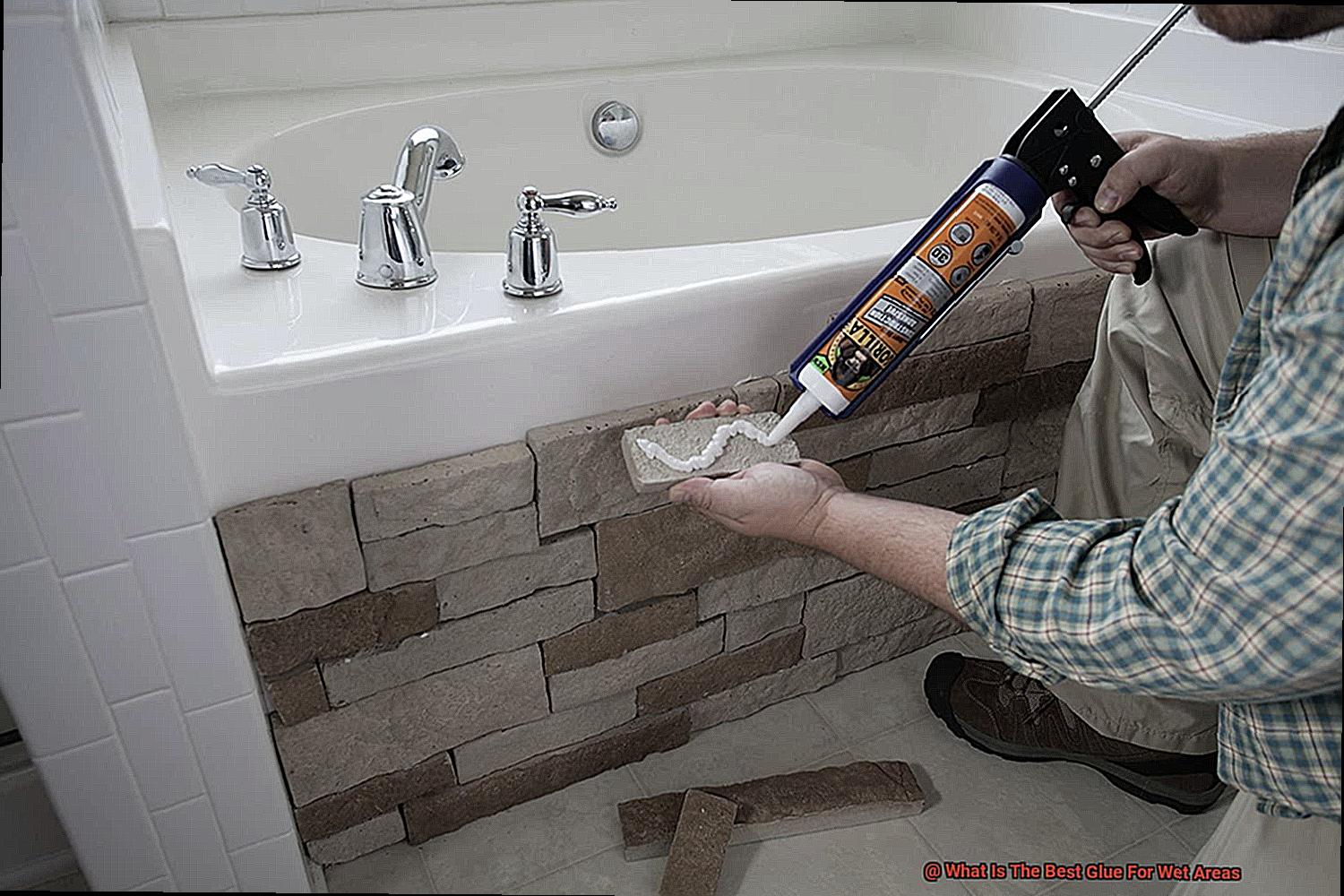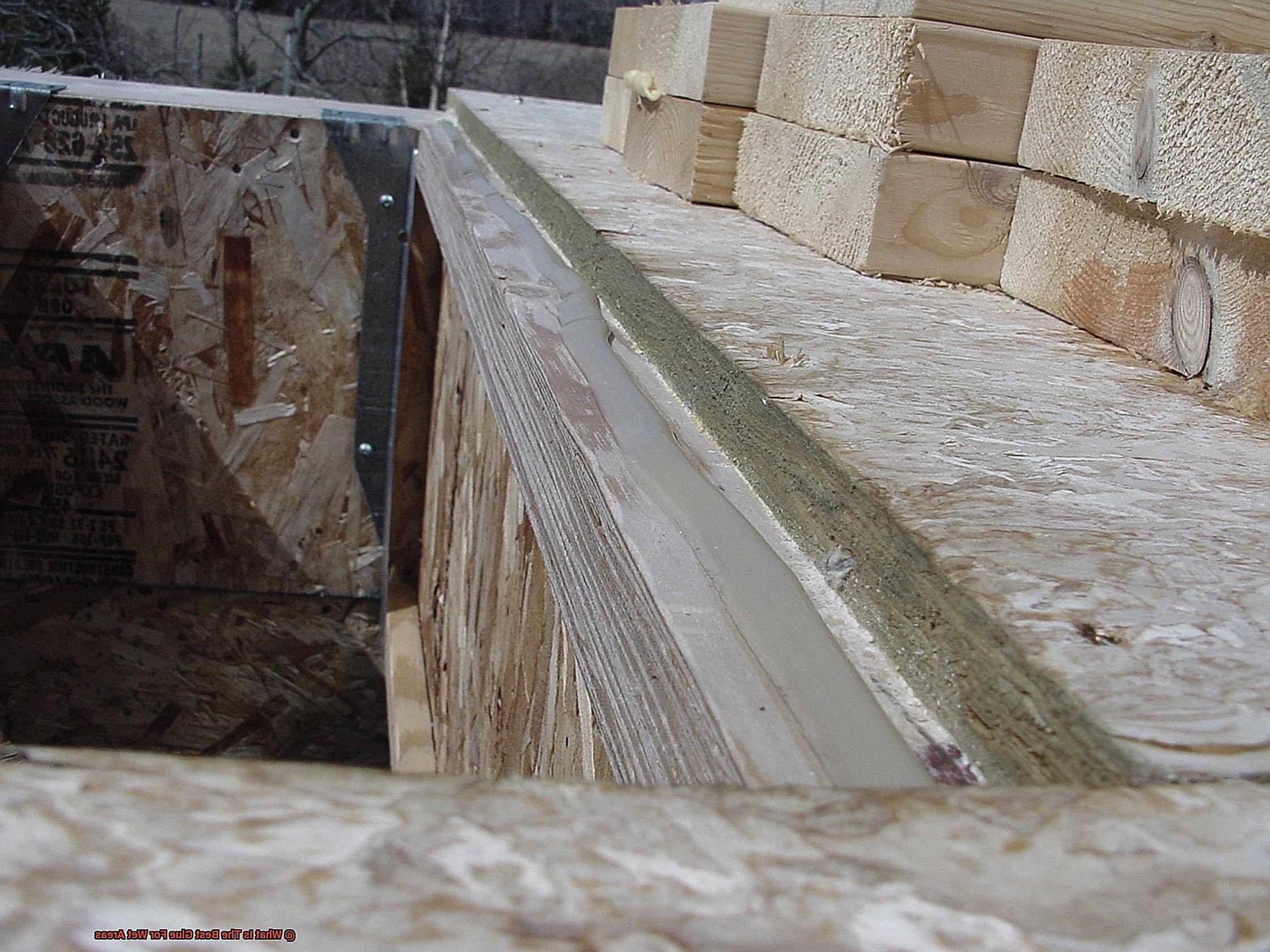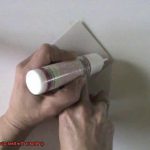Water – it’s a powerful force that covers the majority of our planet. It can erode and destroy almost anything it touches, which is why finding the right adhesive for wet areas is crucial. In today’s blog post, we’re delving into the topic of “What is the best glue for wet areas?”
Whether you’re fixing a pool lining or bonding tiles in a bathroom, water-resistant adhesives are essential. But not all adhesives are created equal when it comes to moist or submerged conditions. So how do you know which one to choose? Fear not – our post will break down everything you need to consider when selecting an adhesive for use in wet areas.
We’ll explore some of the most popular types of adhesives for these conditions, such as silicone, epoxy, and polyurethane-based adhesives. We’ll highlight their key attributes and weigh up their pros and cons so that you can make an informed decision on which one to use.
So let’s dive right in (pun intended) and explore the wonderful world of adhesives for wet areas.
What to Consider When Choosing Glue for Wet Areas
Contents
- 1 What to Consider When Choosing Glue for Wet Areas
- 2 Epoxy: A Popular Choice for Wet Areas
- 3 Polyurethane Glue: Waterproof and Versatile
- 4 Silicone Adhesive: Ideal for Sealing Gaps and Cracks
- 5 Factors to Consider When Choosing the Best Glue for Wet Areas
- 6 The Benefits of Using High-Quality Glue in Damp Environments
- 7 Common Mistakes to Avoid When Using Glue in Wet Areas
- 8 Conclusion
When working on a project in a wet area, choosing the right type of glue can make all the difference. You need to ensure that the glue you use won’t break down or lose its adhesive properties when exposed to moisture. Here are five key factors to consider when selecting the best glue for wet areas.
Waterproofness
The first and most important consideration is whether the glue is waterproof. This means that it can withstand exposure to water or high humidity levels without losing its bonding strength. Look for glues that are specifically designed for use in moist environments, such as bathrooms and kitchens.
Material compatibility

Different glues work better on different materials, so it’s crucial to choose a glue that is compatible with the material you’re working with. For example, some glues work better on wood, while others work better on plastic or metal. Using the right type of glue for the material can ensure optimal results and a strong bond.
Application method
The application method of the glue is also important to consider. Some glues come in convenient applicators like syringes, while others require a brush or spatula for application. Choosing a glue with an easy-to-use applicator can help ensure a mess-free application and accurate placement of the adhesive.
Curing time
The curing time of the glue is another important factor to consider. Some glues require longer curing times than others, and this can be problematic in wet environments where moisture can slow down or inhibit the curing process. Look for glues that cure quickly and effectively in wet conditions, allowing you to use the bonded item sooner.
Safety and toxicity
It’s essential to consider the safety and toxicity of the glue before using it in a wet area. Some industrial-strength adhesives contain harmful chemicals that can be dangerous if ingested or inhaled. Choosing a non-toxic and safe glue can help prevent any potential harm to yourself or others.
In conclusion, when choosing the best glue for wet areas, it’s important to consider factors such as waterproofness, material compatibility, application method, curing time, and safety.
Epoxy: A Popular Choice for Wet Areas
Look no further than epoxy. This two-part adhesive, made up of resin and hardener, is mixed together before being applied. Once cured, it creates a strong and waterproof bond that can withstand even the toughest environments.
Epoxy is a popular choice for wet areas due to its impressive resistance to water and moisture. This makes it an ideal option for marine repairs, swimming pools, and bathrooms. It is also resistant to chemicals, making it perfect for industrial settings with harsh environments.
But that’s not all – epoxy is renowned for its strength and durability. It can handle heavy loads and high impact, making it an excellent choice for high-traffic areas. Plus, it is resistant to UV rays, ensuring it won’t yellow or deteriorate over time.
However, proper surface preparation is critical when applying epoxy in wet areas. The surface should be clean and dry, with any grease or oil removed. The epoxy should then be applied evenly with a brush or roller, taking care not to leave any air bubbles.
Overall, epoxy is a versatile and reliable choice for wet areas where strength and durability are required. Its waterproof properties and resistance to chemicals make it a popular choice in marine, pool, and bathroom areas. Additionally, it is suitable for use in industrial settings with harsh environments.
Polyurethane Glue: Waterproof and Versatile
Look no further than polyurethane glue. As an expert in this field, I can attest to its popularity for projects that require durability and longevity.
The versatility of polyurethane glue is one of its key benefits. It can be used on a wide range of surfaces, such as wood, metal, plastic, and concrete. No matter your level of expertise, whether you’re a DIY enthusiast or a professional in the industry, polyurethane glue is an indispensable tool to have.
Moreover, polyurethane glue is renowned for its waterproof properties. It creates a robust bond that can endure exposure to water, making it perfect for marine applications, outdoor furniture, and even construction projects.
However, before diving into using polyurethane glue for your next project, keep in mind that it can be messy to work with. As it dries, it expands and can leave behind a foam-like residue. Additionally, unlike other types of glue, polyurethane glue has a longer curing time which demands patience and planning.
Nevertheless, the advantages of using polyurethane glue outweigh the drawbacks. This adhesive dries clear and can be sanded or painted over once it has cured. With its remarkable durability and longevity, your project will stand the test of time.
Silicone Adhesive: Ideal for Sealing Gaps and Cracks
Look no further than silicone adhesive. This versatile adhesive is the ideal choice for sealing gaps and cracks in wet areas, and here’s why:
- Water-Resistant Properties: Silicone adhesive is a flexible adhesive that can withstand exposure to moisture, making it perfect for use in bathrooms, kitchens, and other wet areas. Its water-resistant properties mean that it can effectively seal gaps and cracks that are prone to leaks, keeping your home free from unwanted water damage.
- Versatility: One of the many benefits of silicone adhesive is its ability to bond with a variety of surfaces, including glass, metal, and plastic. It’s an excellent choice for sealing gaps and cracks in a range of different areas around your home. Whether you’re dealing with tile grout or a leaky shower door, silicone adhesive will do the job.
- Durability: Silicone adhesive is not only water-resistant but also durable. It can withstand extreme temperatures and is resistant to aging, making it a reliable option for long-term use. You won’t have to worry about replacing your sealing anytime soon.
- Proper Application: To ensure the best results when using silicone adhesive, it’s essential to make sure the surface being sealed is clean and dry before application. This ensures that the adhesive can bond effectively with the surface, resulting in a tight seal. Additionally, choosing the right type of silicone adhesive for your specific job is crucial. Silicone adhesive comes in various forms, including tubes, caulking guns, and sealant strips. Be sure to follow manufacturer instructions for proper application.
Factors to Consider When Choosing the Best Glue for Wet Areas
Choosing the right glue for wet areas can be a daunting task, but it’s crucial to consider several factors to ensure that the adhesive performs well and provides long-lasting results. Here are the key factors to keep in mind.
Surface Type:
Different surfaces require different types of adhesives. For instance, porous surfaces like wood or concrete need an adhesive that can penetrate the pores to create a strong bond. Non-porous surfaces like metal or glass may require a different adhesive altogether. It’s important to research and choose an adhesive that is specifically designed for the surface you’ll be working with.
Environment:
Wet areas can vary greatly in terms of temperature, humidity, and exposure to water. Some adhesives may not perform well in extreme temperatures or high humidity levels, while others may break down when exposed to water or moisture. It’s crucial to choose an adhesive that can withstand the environment it will be used in.
Adhesive Properties:
Different applications require different adhesive properties. If you’re working with a surface that will be exposed to heavy wear and tear or vibration, you’ll need an adhesive that has high strength and flexibility. Alternatively, if you’re working with a surface that needs to be sealed against water or other liquids, you’ll need an adhesive with good sealing properties.
Silicone Adhesive:
One of the most versatile adhesives for wet areas is silicone adhesive. It can bond with almost any surface and effectively seal gaps and cracks to prevent water damage. However, it’s still important to consider all the factors mentioned above before choosing a specific product.
The Benefits of Using High-Quality Glue in Damp Environments

Look no further. The solution lies in using high-quality glue that can withstand moisture and maintain its strength over time, offering a range of benefits you won’t want to miss out on.
One of the primary advantages of using high-quality glue in damp environments is its ability to resist water. Unlike low-quality glues that break down when exposed to moisture, high-quality glues are designed to maintain their strength, ensuring a strong and long-lasting bond.
Another benefit of using high-quality glue in damp environments is its ability to prevent mold and mildew growth. Low-quality glues that break down due to moisture exposure can create an ideal environment for mold and mildew to grow, not only weakening the bond but also posing a health hazard. In contrast, high-quality glues are designed to prevent mold and mildew growth, keeping the area clean and safe.
But wait, there’s more. Using high-quality glue in damp environments can save you both time and money in the long run. By avoiding weak bonds that may need repairs or redoing the job altogether, you’ll save valuable time and money.
Common Mistakes to Avoid When Using Glue in Wet Areas
Knowing the common mistakes people make when using adhesives in damp conditions can prevent a disastrous outcome. Here are some tips to keep in mind:
Surface Preparation:
The first and most crucial step is surface preparation. A dirty or wet surface can compromise the bond and lead to weak adhesion. Therefore, it’s essential to ensure that the surface is clean and dry before using any adhesive. Wipe down the surface with a clean cloth and let it dry entirely before applying the glue.
The Right Type of Glue:
Not all adhesives are suitable for use in wet areas. Traditional white glue or school glue won’t work well in damp conditions. Instead, opt for waterproof adhesives such as epoxy or marine glue. These types of adhesives can withstand moisture, prevent mold growth, and create a long-lasting bond. Always check the label on the adhesive to ensure it’s suitable for use in wet areas.
The Correct Amount of Glue:
Using too little glue can compromise the strength of the bond, while using too much glue can result in a messy application and longer drying time. It’s essential to use enough adhesive to create a strong bond but not too much that it will take longer to dry. Follow the manufacturer’s instructions regarding how much glue to use for optimal results.
Sufficient Drying Time:
Rushing the process and not allowing enough time for the adhesive to dry fully is another common mistake people make. It’s crucial to follow the manufacturer’s instructions regarding drying time and allow sufficient time for the adhesive to cure entirely before exposing it to water or other wet conditions. Avoid rushing the process and allow enough time for the adhesive to dry completely for a strong and long-lasting bond.
Also Read: Is Super Glue Waterproof? – Glue Things
Conclusion
To ensure a strong and long-lasting bond in wet areas, selecting the best glue is crucial. Factors such as waterproofness, material compatibility, application method, curing time, and safety must be considered when choosing an adhesive for use in moist or submerged conditions. Epoxy, polyurethane glue, and silicone adhesive are among the most popular types of adhesives for these environments.
Epoxy is renowned for its strength and durability, making it an excellent choice for high-traffic areas like marine repairs, swimming pools, and bathrooms. Polyurethane glue is versatile and can be used on a wide range of surfaces with remarkable longevity. Meanwhile, silicone adhesive’s water-resistant properties make it ideal for sealing gaps and cracks in wet areas.
Opting for high-quality glue that can withstand moisture offers several benefits such as resistance to water damage and mold growth prevention while saving time and money in the long run. However, common mistakes such as insufficient drying time or using the wrong type of glue can compromise the bond’s strength.
Therefore it’s essential to follow manufacturer instructions carefully when selecting an adhesive for wet areas.






